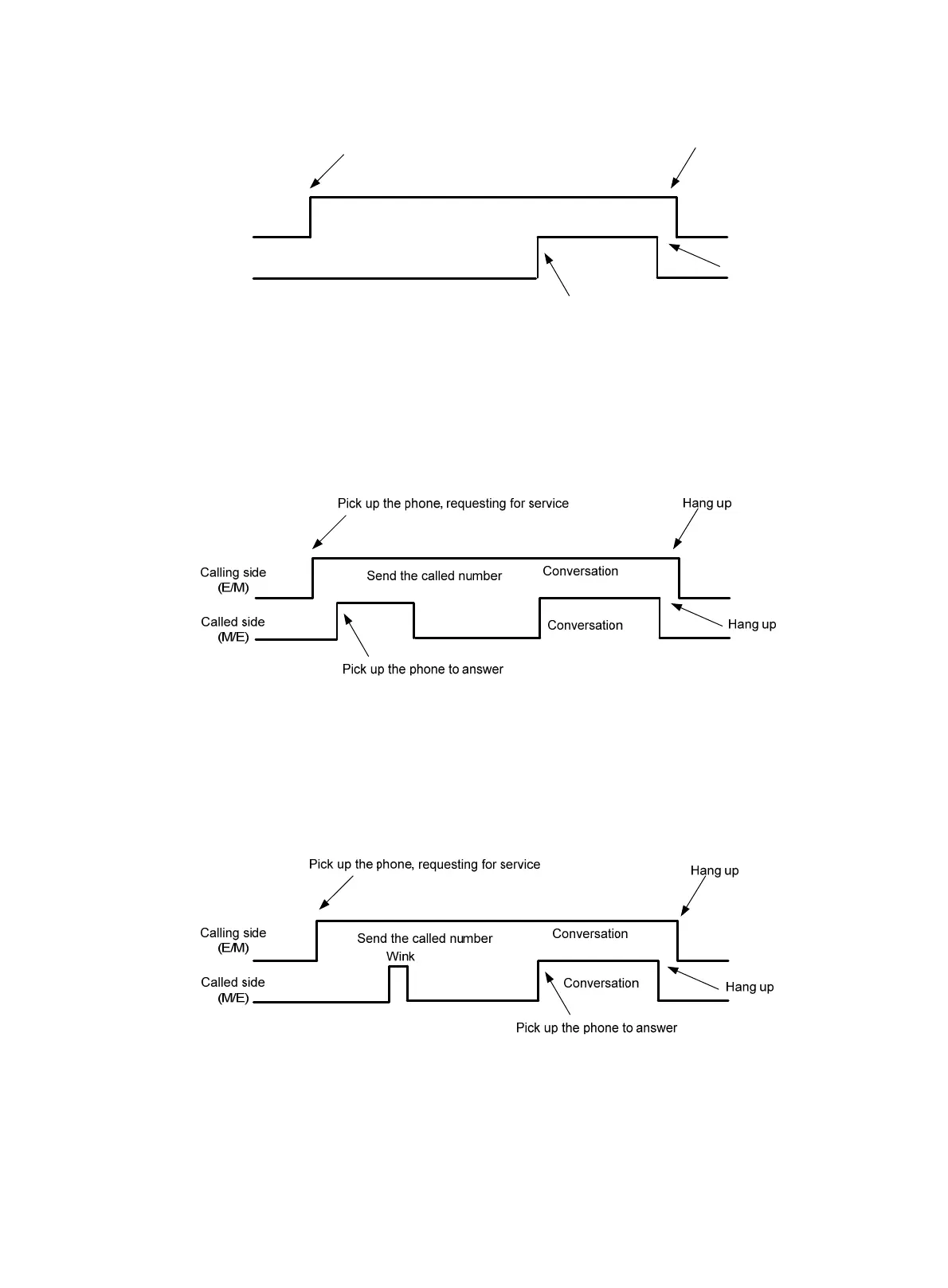344
Figure 729 Immediate start mode
• Delay start—In this mode, the caller first picks up the phone to seize the trunk line, and the
called side (such as the peer PBX) also enters the off-hook state in response to the off-hook
action of the caller. The called side (PBX) will be in the off-hook state until it is ready for
receiving the address information. After it is ready, it will enter the on-hook state and this interval
is the so-called dial delay. The calling side sends the address information, and the called side
(PBX) connects the call to the callee. Therefore, the two parties can begin the communication.
Figure 730 Delay start mode
• Wink start—In this mode, the caller first picks up the phone to seize the trunk line, and the
called side (such as the peer PBX) is in the on-hook state until receiving a connection signal
from the calling side. Then, the called side will send a wink signal to make an acknowledgement
and enter the ready state. Upon receiving the wink signal, the calling side begins to send the
address information and the called side connects the call to the callee. Therefore, the two
parties can begin the communication.
Figure 731 Wink start mode
Calling side
(E/M)
Called side
(M/E)
Send the called number
Conversation
Conversation
Pick up the phone, requesting for service
Pick up the phone to answer
Hang up
Hang up

